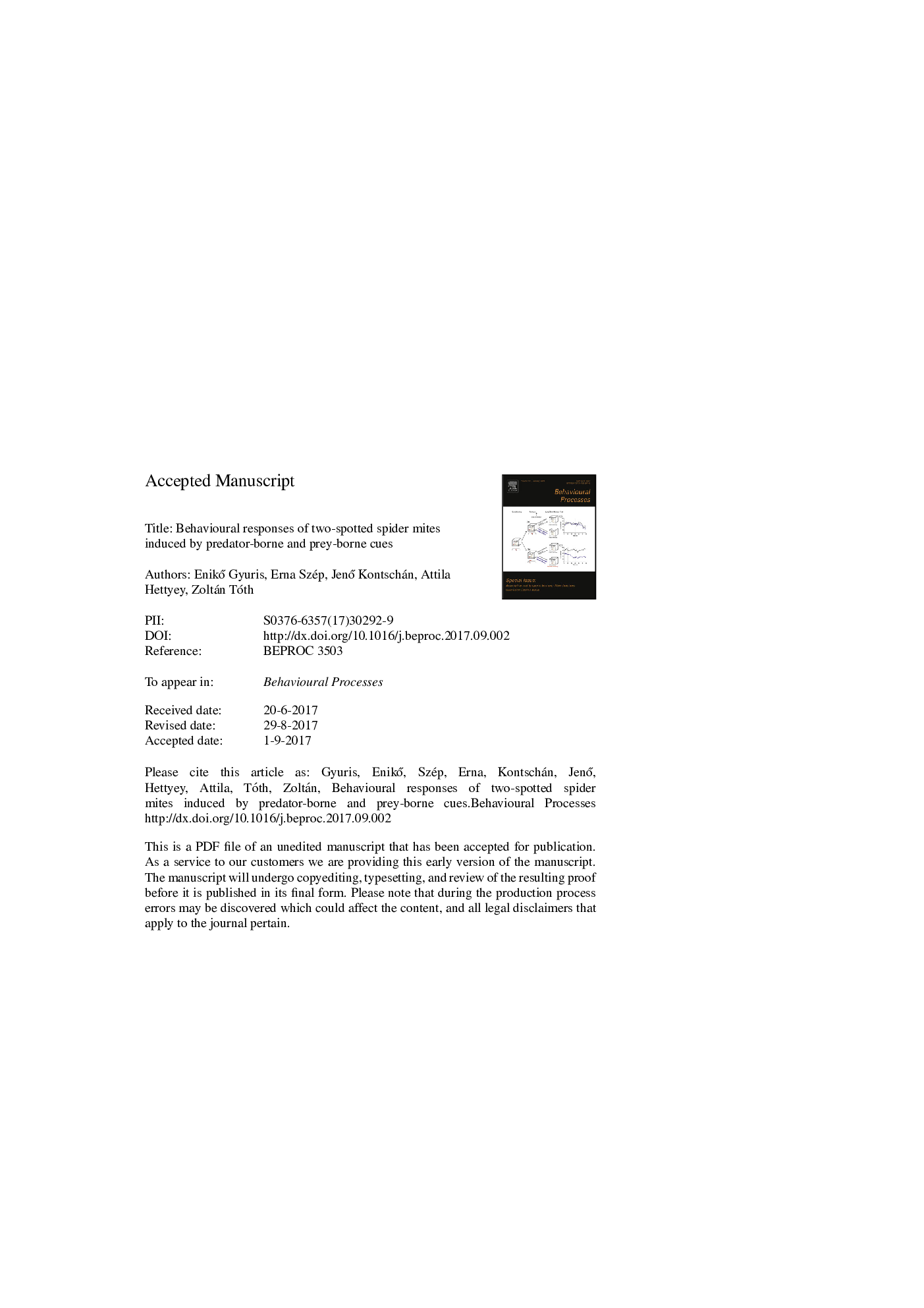| Article ID | Journal | Published Year | Pages | File Type |
|---|---|---|---|---|
| 5539725 | Behavioural Processes | 2017 | 29 Pages |
Abstract
Applying predatory mites as biological control agents is a well established method against spider mites which are major pests worldwide. Although antipredator responses can influence the outcome of predator-prey interactions, we have limited information about what cues spider mites use to adjust their behavioural antipredator responses. We experimentally exposed two-spotted spider mites (Tetranychus urticae) to different predator-borne cues (using a specialist predator, Phytoseiulus persimilis, or a generalist predator, Amblyseius swirskii), conspecific prey-borne cues, or both, and measured locomotion and egg-laying activity. The reactions to predator species compared to each other manifested in reversed tendencies: spider mites increased their locomotion activity in the presence of P. persimilis, whereas they decreased it when exposed to A. swirskii. The strongest response was triggered by the presence of a killed conspecific: focal spider mites decreased their locomotion activity compared to the control group. Oviposition activity was not affected by either treatment. Our results point out that spider mites may change their behaviour in response to predators, and also to the presence of killed conspecifics, but these effects were not enhanced when both types of cues were present. The effect of social contacts among prey conspecifics on predator-induced behavioural defences is discussed.
Related Topics
Life Sciences
Agricultural and Biological Sciences
Animal Science and Zoology
Authors
EnikÅ Gyuris, Erna Szép, JenÅ Kontschán, Attila Hettyey, Zoltán Tóth,
